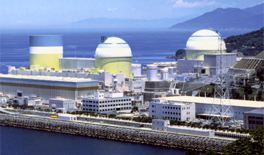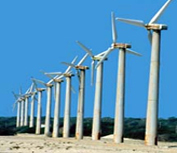Advancing sustainable development in Africa
<p>The report provides a detailed analysis of the design and implementation of Science, Technology, and Innovation (STI) roadmaps aimed at advancing the Sustainable Development Goals (SDGs) in Sub-Saharan
<p>The report provides a detailed analysis of the design and implementation of Science, Technology, and Innovation (STI) roadmaps aimed at advancing the Sustainable Development Goals (SDGs) in Sub-Saharan
HELSINKI, June 10: India will stand to significantly gain from a new technology on solar power as it is cheap, green and efficient, says Michael Gratzel, winner of this year

This technology roadmap on nuclear energy released by IEA & OECD finds that nearly one-fourth of global electricity generation could be met with nuclear power by 2050, offering significant CO2 savings & says that financing new nuclear plants is expected to be a major challenge.
This study highlights the central role of capacity development for scaling up rural energy service delivery and to catalyze private financing for achieving universal energy access and the MDGs. Although it takes considerable upfront public investment to kick-start capacity development, once these investments have been made they can attract substantial financing from private sources.
Investment in clean energy technologies in developing countries is a key component of achieving global commitments to reduce greenhouse gas emissions under the Kyoto Protocol. One mechanism to promote investment in energy efficiency technologies is through energy performance contracting (EPC) undertaken by Energy Service Companies (ESCOs).
This paper provides an overview of some of the issues surrounding the use of renewable energy technologies (RETs) to increase access to modern energy services in rural areas.
The two primary motivations for energy policy in the United States are promoting energy security and combating climate change. Because the electricity sector accounts for roughly 40 percent of national carbon dioxide (CO2) emissions, renewable sources of electricity could be particularly important for

<p>This report details trends in the renewable energy sector across the world. Finds that investment in renewable energy power capacity (excluding large hydro) in 2009 was comparable to that in fossil-fuel generation, at around $100 billion each. <br></p>
Recent actions by many governments to promote more efficient, cleaner sources of energy signify positive steps to help improve energy security and mitigate climate change. Transformation of the energy sector, however, requires that commitments to energy efficiency and clean energy be sustained on a global level for many years to come.
Coal power generation in China and India is expected to double and triple, respectively, over the next 20 years, increasing exposure to fuel price volatility, exacerbating local air pollution, and hastening global climate change. Concentrating solar power (CSP) is a growing source of utility-scale, pollution-free electricity, but its potential in Asia remains largely unexamined.
This report seeks to inform decision makers seeking to prioritise RD&D investments in a time of financial uncertainty. It is an update of the December 2009 IEA report Global Gaps in Clean Energy Research, Development and Demonstration, which examined whether rates of LCET investment were sufficient to achieve shared global energy and environmental goals (IEA,2009a).